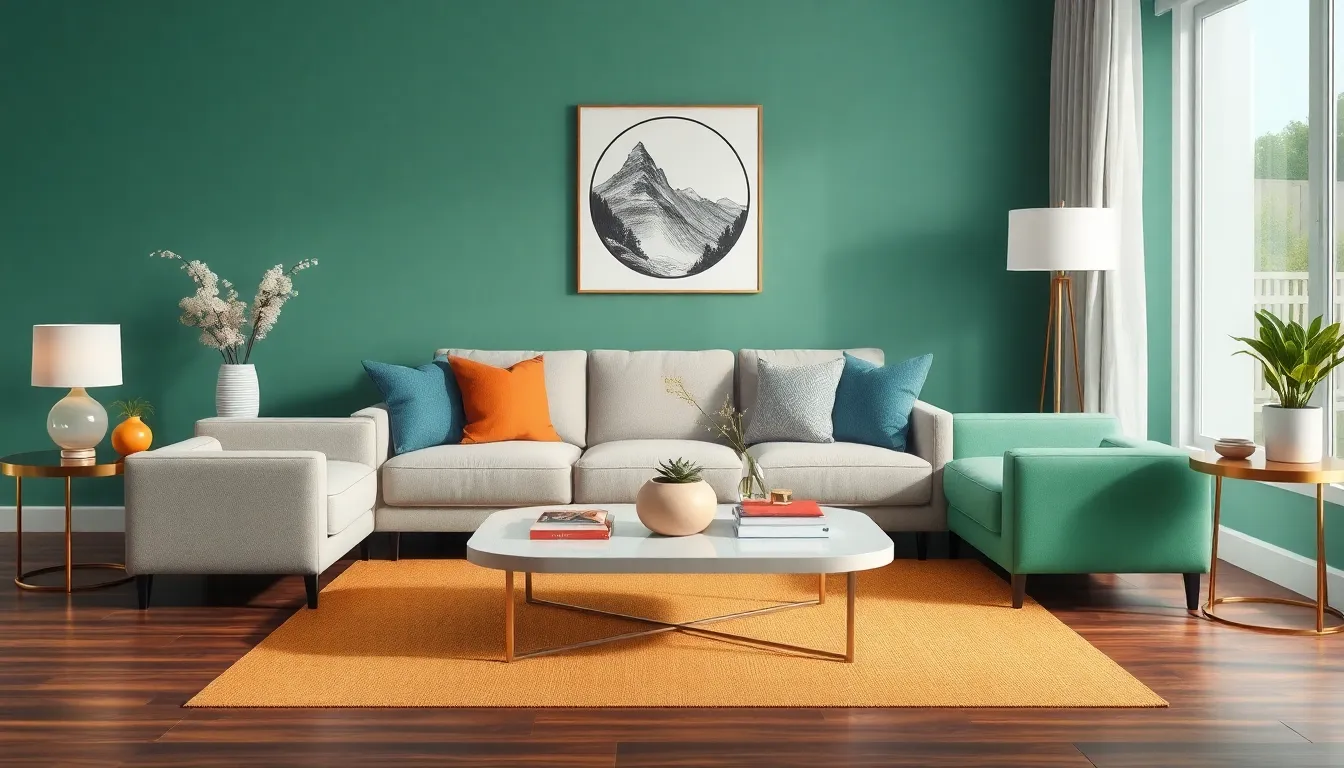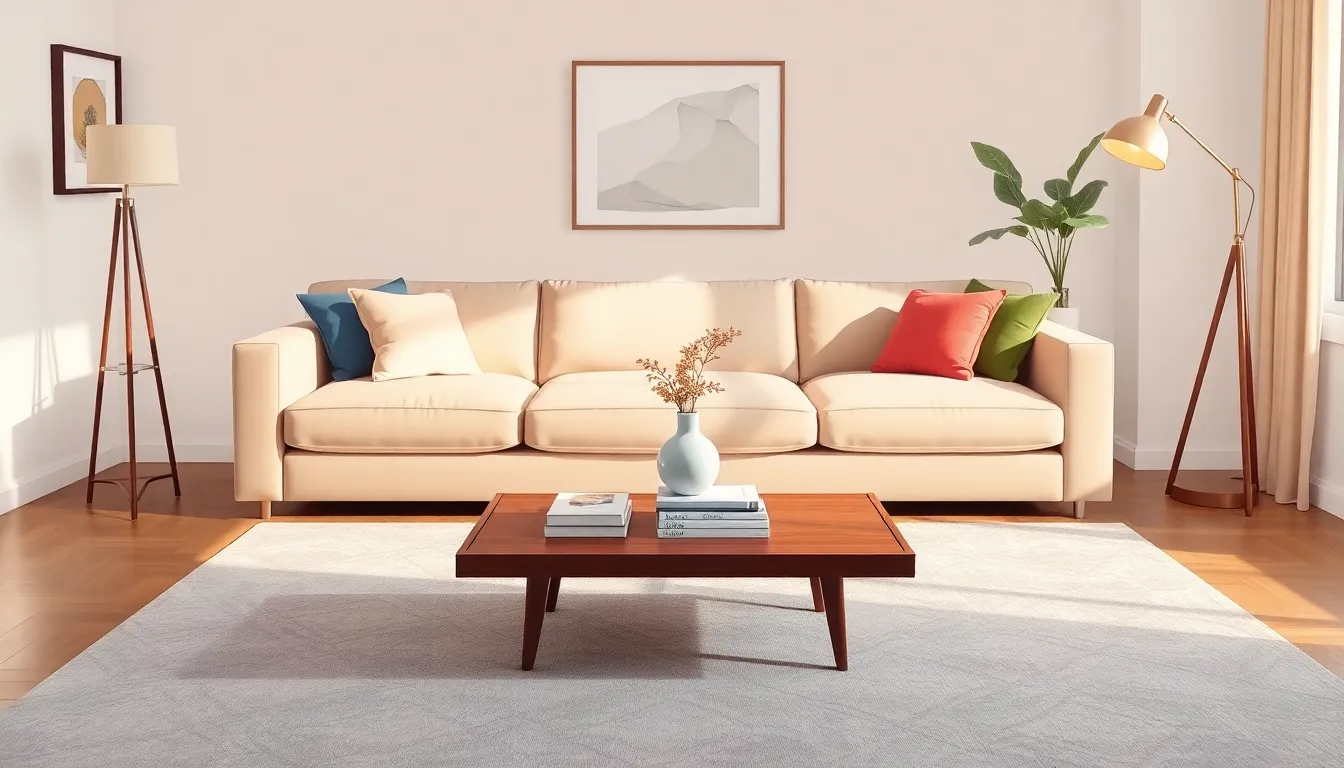Table of Contents
ToggleIn the world of home decor, central furniture isn’t just a piece of wood and fabric; it’s the heart of a space, the showstopper that steals the spotlight. Imagine walking into a room where the sofa beckons you like an old friend, inviting you to sink in and stay awhile. Central furniture transforms a house into a home, creating a cozy atmosphere that whispers, “You belong here.”
Choosing the right central furniture can feel like dating—sometimes it’s love at first sight, and other times, it’s a total flop. But fear not! With the right tips and tricks, anyone can find that perfect match. Let’s dive into the world of central furniture and discover how to make your living space not just functional, but fabulously inviting. After all, who wouldn’t want a living room that’s the talk of the town?
What Is Central Furniture?
Central furniture serves as the centerpiece in a room, establishing both functionality and aesthetic appeal. It includes essential items like sofas, coffee tables, and dining tables that directly influence the overall design and usage of a space. Functionality remains crucial, as these pieces must accommodate daily activities while also enhancing the room’s visual interest.
Central furniture often dictates the layout of the surrounding elements. For example, a spacious sectional sofa may encourage conversational arrangements, enhancing social interactions. A prominent dining table can become the gathering point for family meals and special occasions.
Styles vary significantly among central furniture pieces, ranging from contemporary minimalism to classic elegance. Materials play an important role, too; wood, metal, and upholstered fabrics can each contribute to a distinct atmosphere.
Size matters; oversized pieces can overwhelm smaller spaces, while too-small items may get lost in larger rooms. Choosing the right scale can create balance and harmony.
Color selection also affects the room’s mood. Bold colors can energize a space, while neutral tones tend to promote calmness. When combined strategically, central furniture can guide the eye and create cohesive décor throughout the home.
Central furniture definitely impacts how a home feels. It invites warmth and comfort, making spaces inviting for both residents and guests.
Importance of Central Furniture

Central furniture significantly enhances the overall aesthetic and functionality of living spaces. It defines the visual focal point of a room, encouraging cohesive design and purposeful arrangement.
Design Aesthetics
Design aesthetics rely heavily on central furniture selection. The right pieces, such as a stylish sofa or an elegant coffee table, establish a theme and set the mood. Various materials like wood, metal, and upholstery contribute distinct character. Colors play an essential role; vibrant hues inject energy into a space, while neutral tones provide tranquility. Each choice signals personal style and helps create a welcoming atmosphere.
Functional Benefits
Functional benefits stem from the strategic placement of central furniture. Such pieces, including dining tables and sofas, foster social interaction and gatherings. Layout considerations dictate movement flow and usability of a space. Central furniture often dictates the layout of surrounding elements, maximizing both comfort and convenience. Size selection impacts how well a room accommodates activities, ensuring a practical yet inviting environment.
Types of Central Furniture
Central furniture encompasses various types that contribute to both style and usability in living spaces. Key categories include sofas, coffee tables, and entertainment units, each serving a pivotal role in room design.
Sofas and Sectionals
Sofas and sectionals act as the main seating areas in living rooms. They define conversational spaces, providing comfort and functionality. Different styles, such as contemporary, traditional, or mid-century, influence the overall aesthetic. Sizes range from small loveseats to large sectionals, accommodating different room dimensions. Color selections play a crucial role; bold hues create a statement, while neutral tones blend seamlessly into diverse decors. Materials vary widely, from luxurious leather to soft upholstery, impacting both durability and maintenance.
Coffee Tables
Coffee tables serve as versatile surfaces in living areas. They provide a central spot for drinks, books, and decorative items, enhancing overall functionality. Styles range from minimalist designs to ornate, eclectic pieces, complementing various sofa styles. Height and size are significant; a well-proportioned coffee table allows easy reach from surrounding seating. Materials such as wood, glass, and metal offer durability and style choices. Color can create a focal point or harmonize with existing decor, reinforcing the room’s theme.
Entertainment Units
Entertainment units hold significant importance in modern living spaces. They organize and display media equipment, bridging the gap between functionality and design. Various styles exist, such as sleek, modern units or rustic, wooden designs, catering to diverse tastes. Size considerations matter; units must align with television dimensions and available wall space. Material choices, including wood, metal, or composite materials, impact longevity and ease of care. Color schemes can complement or contrast with surrounding furniture, enhancing the room’s visual appeal.
Choosing the Right Central Furniture
Selecting central furniture requires careful consideration. Elements such as space, style, and material significantly influence the decision-making process.
Space Considerations
Space dimensions and layout dictate furniture choices. Smaller rooms benefit from compact and multifunctional pieces like loveseats or sleek coffee tables. Open-concept layouts often accommodate larger items, including sectionals, enhancing the visual flow. Traffic patterns also demand attention; ensuring enough room for movement keeps areas functional. An assessment of available space helps in determining appropriate sizes, avoiding overcrowding. Use measuring tools to visualize how each piece fits within the environment, leading to a cohesive and welcoming atmosphere.
Style and Material
Style plays a key role in creating an appealing design. Identifying a theme—whether modern, rustic, or eclectic—guides the selection process. Mixing styles can create a unique statement, but coherence should remain a priority. Material choices, such as wood, metal, or upholstery, directly affect durability and comfort. For instance, leather offers a sleek look and is easy to maintain, while upholstered pieces provide softness for comfort. Color schemes also enhance style; bold hues energize a space, while neutral tones offer calmness. Emphasizing both style and material ensures central furniture complements the overall decor.
Choosing the right central furniture is essential for creating an inviting and functional living space. It sets the tone for the entire room and influences how people interact within that space. By carefully considering style size and material, one can ensure that their central furniture not only enhances aesthetic appeal but also meets practical needs.
Investing time in selecting the perfect pieces can lead to a harmonious environment that reflects personal taste and lifestyle. With the right central furniture in place the home becomes a true sanctuary for both residents and guests.








